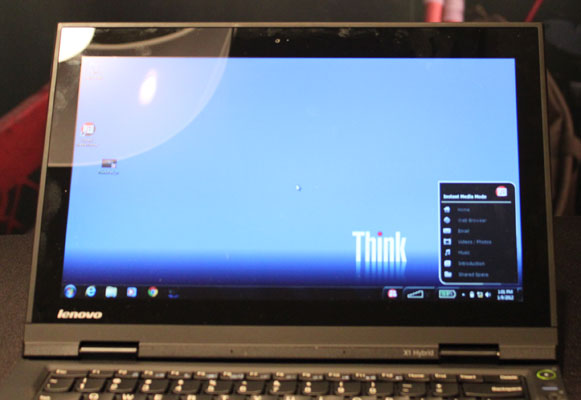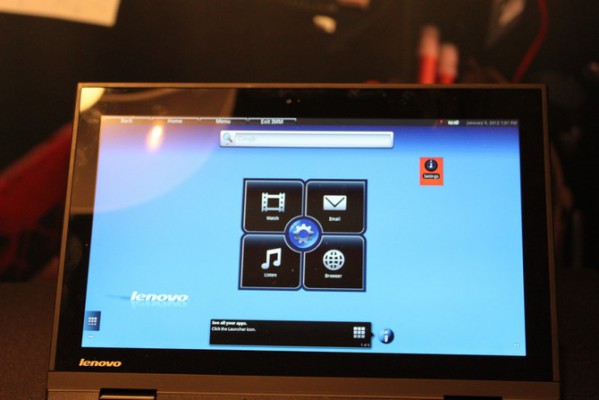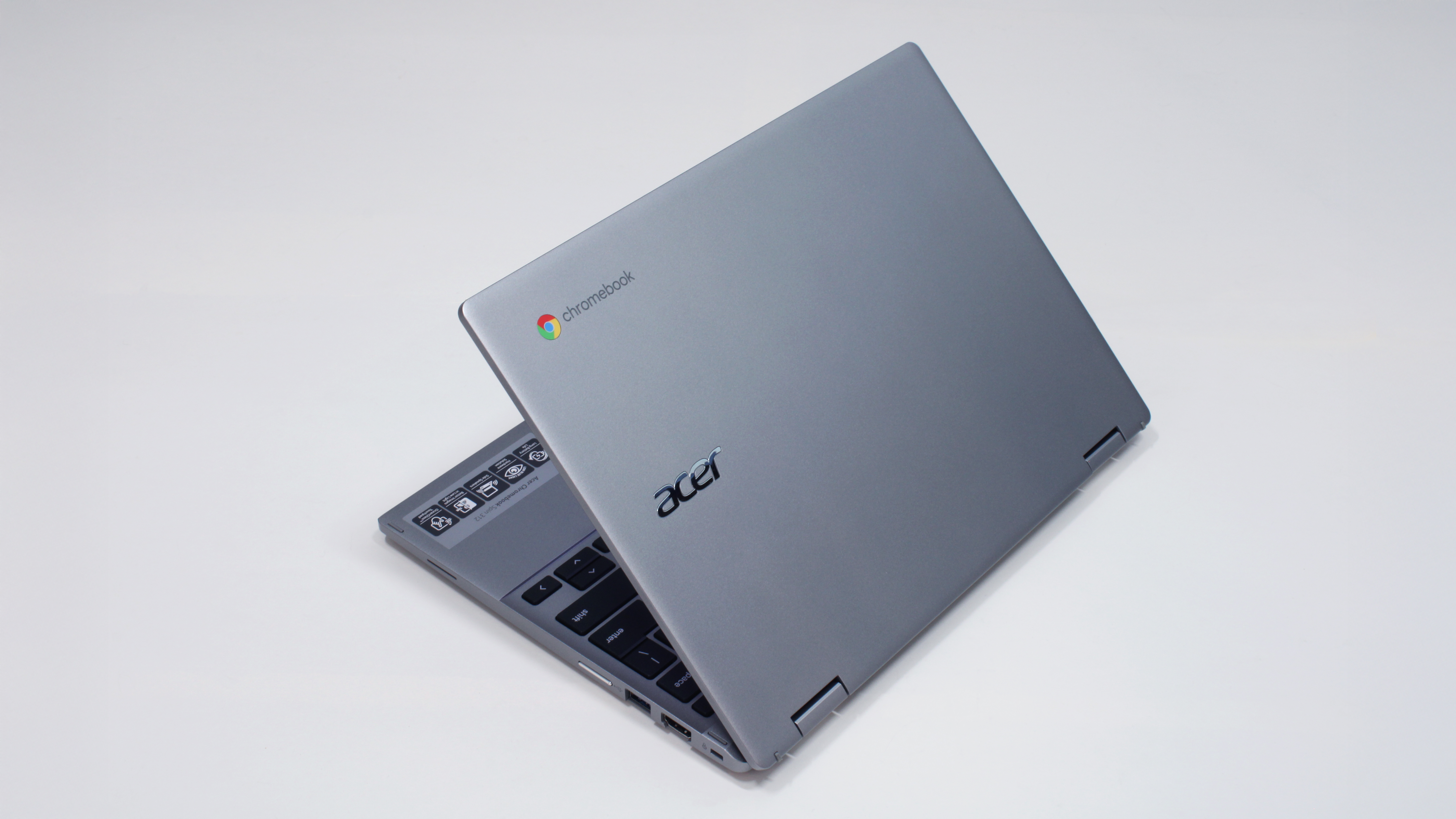Lenovo ThinkPad X1 Hybrid Hands-On: Incredibly Fast OS Switching

LAS VEGAS -- Lenovo took the wraps off its long-rumored ThinkPad X1 Hybrid this week at CES, showcasing the dual-OS PC notebook that switches instantly to a low-power environment to save juice. We had gotten an early briefing on the product several weeks ago, but this week was our first opportunity to actually touch the notebook ourselves and get a better feel for it.
On the outside, the ThinkPad X1 Hybrid is identical to the original ThinkPad X1, with the same svelte design, luxurious soft-touch palmrest and industry-leading tactile keyboard. By the same token, the overly-glossy 1366 x 768 display is the same and so is the capacity of the internal battery which provided only 4 hours and 11 minutes of endurance on our tests.
The only real change from the X1 is the availability of Instant Media Mode, a scaled-down operating system you can switch to when you just want to surf the web, check email or play media files. In our brief hands-on time, switching back and forth from Windows to Instant Media Mode was easy and incredibly fast.
When you're in Windows, an IMM menu sits in the lower right hand corner of the screen, just above the system tray. Simply tapping on one of the buttons for music, browser, email or photos switches you to that application in the IMM environment. When in IMM, you simply hit the Exit tab and you're transported back to Windows. In our tests, it took a mere 2 seconds to switch between environments, though Wi-Fi had to reconnect itself after each change.

We noticed immediately that the IMM environment looks a lot like a version of Android, a fact that was easy to confirm when we looked at the settings menu. Unfortunately, the apps selection is limited to a simple menu box with buttons that correspond to the browser, music player, email (which just opens Gmail) and photos. Tabs for Exit, Menu, Home and Back sit at the top of the screen.

When we were in the Instant Media Mode environment, we navigated over to the music player and saw a list of locally-stored songs. We also saw a streaming flash video of a basketball game playing very swiftly at full-screen. Unfortunately, the email button just launches the browser; there's no dedicated email client that downloads your mail for you.
Considering that IMM is Android with just a couple of apps and Lenovo branding, it may be possible for users to sideload their owns apps and turn this into a full-fledged Android notebook. We can't wait to see the custom ROMs.
Stay in the know with Laptop Mag
Get our in-depth reviews, helpful tips, great deals, and the biggest news stories delivered to your inbox.
Inside the X1 Hybrid's sleek frame, there's all the makings of an Android tablet, including a dual-core Qualcomm Snapdragon CPU, 1GB of RAM and 16GB of flash memory. When you're in Windows, that 16GB of Flash memory is listed as drive letter E so you can easily share files between the two environments.
When you go into Instant Media Mode, the Intel CPU and other PC components go into an extremely low-power state while the ARM-based processor fires up. By switching into IMM, users could more than double that 4 hours of battery life.
The problem, of course, is that users would need to be performing only the very simple content-consumption tasks that IMM allows. If they want to watch a movie on a flight and they have it on the storage, they'll see a benefit, but if they're in Microsoft Office all day, they will still get only 4 hours of endurance on this notebook. Considering that you can buy a 0.8 pound battery slice that doubles the battery life in Windows to 8 hours for just $150 and the price delta between the original X1 and the X1 hybrid is more than that, many users may opt for the slice instead.
Still, the technology is truly a breakthrough and could give users a unique way to save battery life without compromising portability. We're particularly interested in seeing what kinds of additional functionality Lenovo adds to this platform over time and what unique uses power users find for it.

